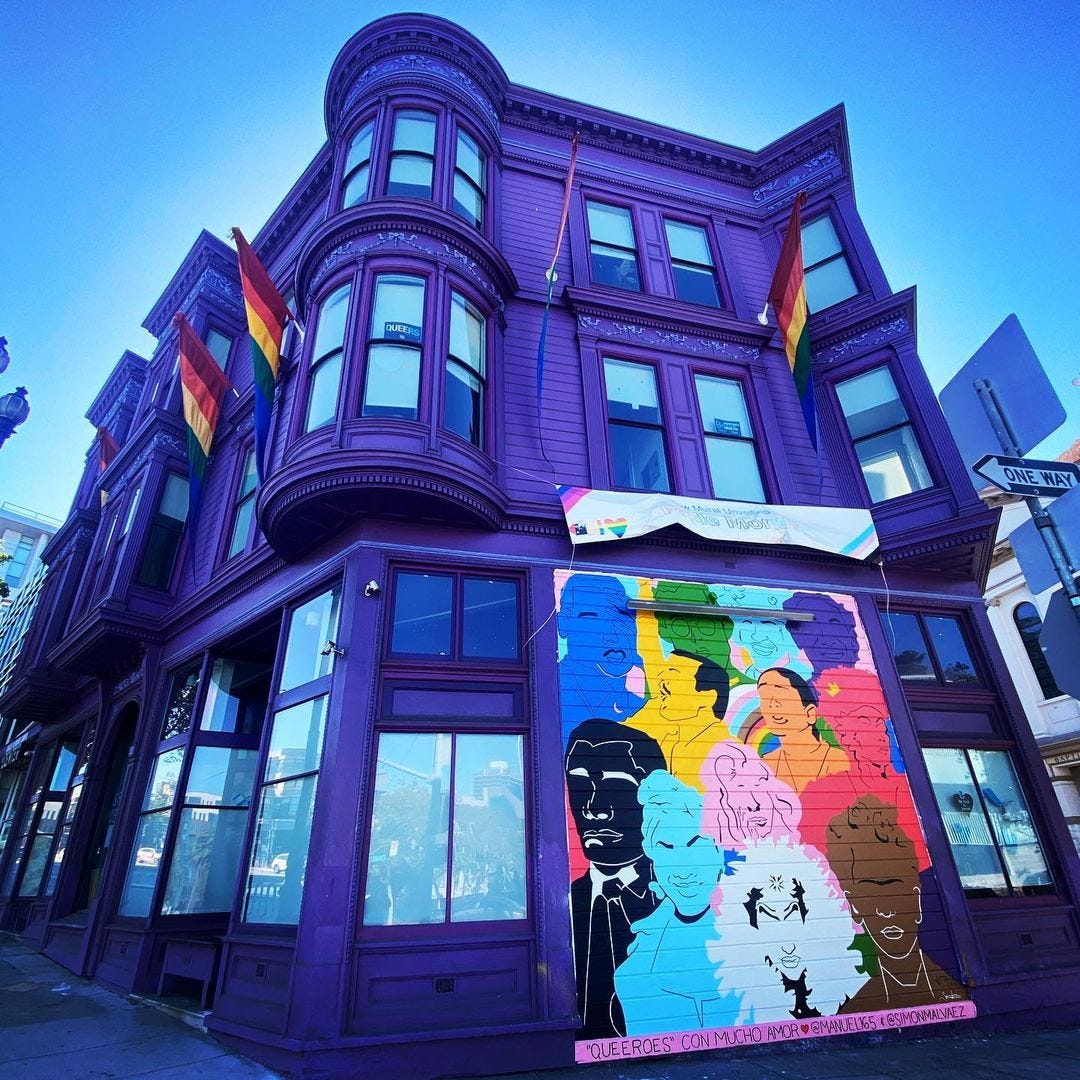
The painted ode to local and national LGBTQI+ heroes replaces fnnch’s contentious queer-themed honey bears

After widespread backlash (and a mildly praised backpedaling) about fnnch’s contentious mural at the queer nonprofit, the trio of rainbow honey bears was removed in April, painted over by a coat of white paint. (Y’all already know how I feel about fnnch’s honey bears that were once smeared across the SF LGBT Center. We’ll leave it at that.. for now.)
And up until last week, the tall wall sat blank, but that’s no longer the case after a pair of queer artists, Simón Malvaez and J Manuel Carmona, finished their mural dedicated to queer trailblazers over the weekend.
Unlike the human-sized ursids it replaces, the joint mural for Carmona and Malvaez was ideated outside of cookie-cutter norms and ambiguous symbolism. It, instead, sits as a welcomed dicotomy to the former piece of public art that graced the center — sitting as a towering homage to the “queeros” who’ve helped create and support a more inclusive society, be it here in San Francisco or halfway across the country.
As Carmona told TBI, the color palette used on the Progress Pride Flag served as a well-fitting foundation for the piece.
“For this mural, we started with the Progressive Pride Flag because to us it represents the amazing diversity within the Queer community,” the queer Mexican-American artists tell us. “We wanted to showcase ‘heroes’ from the past and present who we feel should be celebrated in the LGBTQ+ community as well as the intersection with our Latino Heritage.”
The dozen painted abstract portraits include both local queer notables and national fixtures, some of who have long passed. For example: Depictions of Freddie Mercury, Frida Kahlo, and James Baldwin sit alongside drawings of San Francisco LGBTQI+ royalty like Juanita MORE!, Honey Mahogany, and Sister Roma; Harvey Milk, too, is pictured in the mural next to Marsha P. Johnson.
“We hope that this mural invokes love and curiosity for our past, a connection to our present, and inspires a diverse future for the LGBTQ+ movement,” Carmona adds.
Looking up at the sprawling, chromatic portrayal of diversity, it’s hard not to find an impulse to support the need for a more inclusive society — one where everyone can live authentically, sans prejudice.